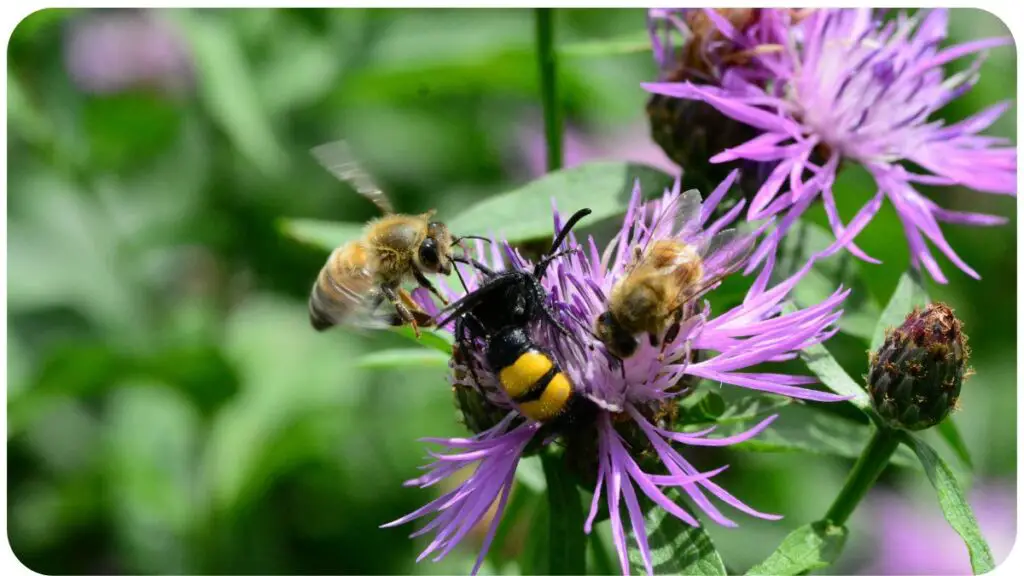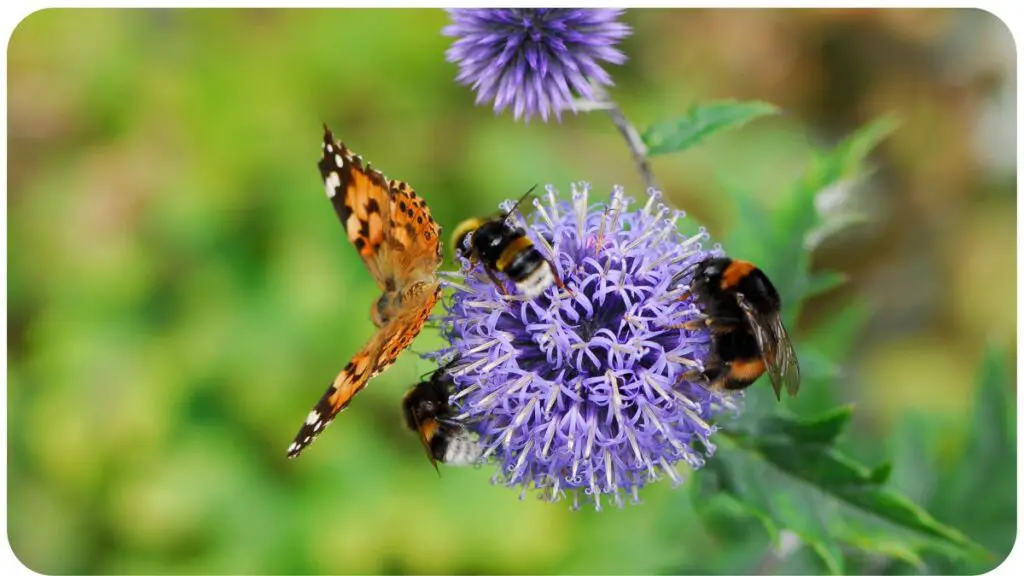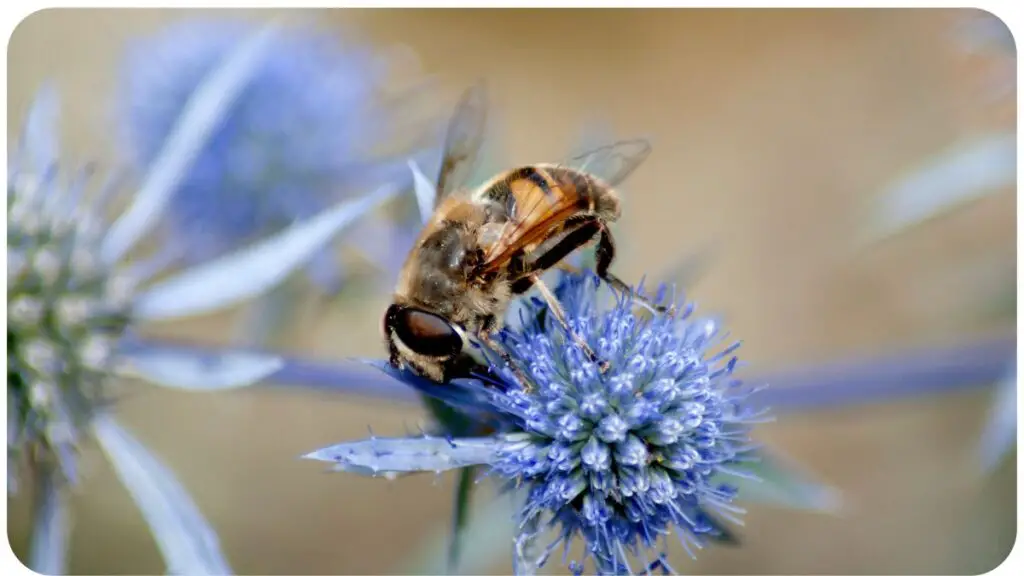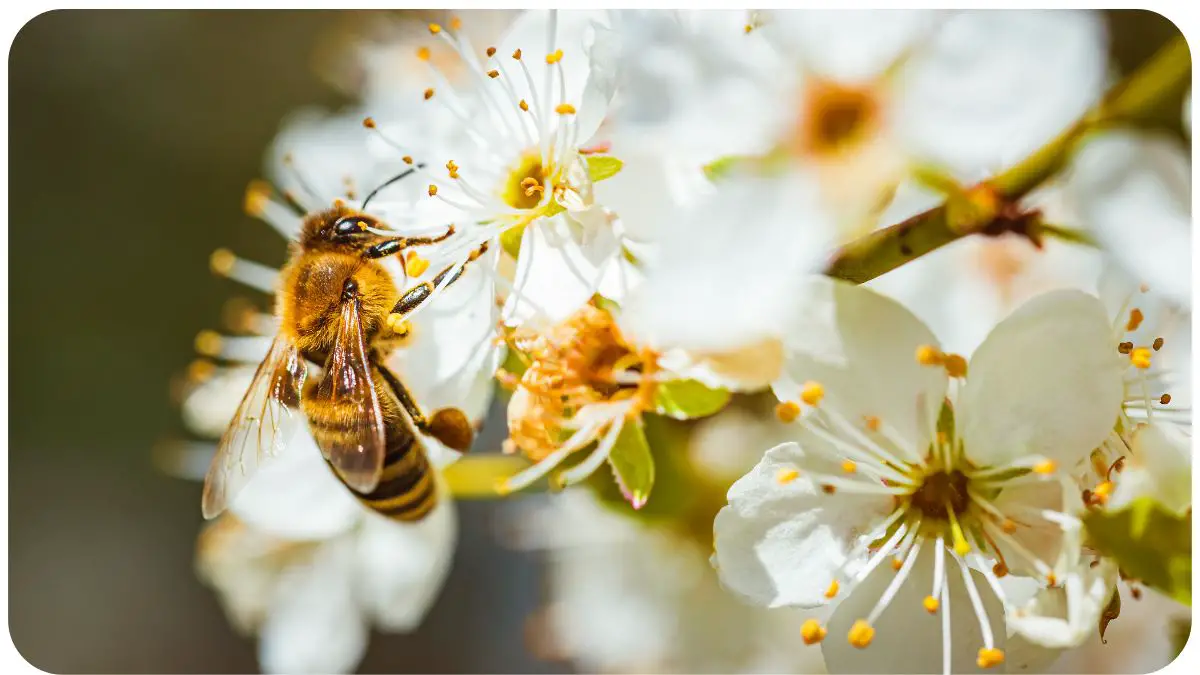Are you ready to transform your backyard into a haven for pollinators? Creating a pollinator paradise is not only beneficial for the environment but also adds beauty and vibrancy to your outdoor space.
In this guide, we’ll explore the steps to turn your backyard into a thriving ecosystem that supports bees, butterflies, birds, and other essential pollinators.
| Key Takeaways |
|---|
| 1. Diversity is key: Plant a variety of native flowers to attract a wide range of pollinators to your backyard. |
| 2. Provide habitat diversity: Create nesting sites, shelter, and water sources to support pollinator health and diversity. |
| 3. Avoid pesticides: Opt for natural pest control methods to protect pollinators from harm. |
| 4. Monitor and maintain: Regularly monitor pollinator activity and maintain your garden with care to ensure its long-term success. |
| 5. Engage with the community: Spread awareness about the importance of pollinators and inspire others to create pollinator-friendly spaces. |
2. Understanding Pollinators

Before diving into the nitty-gritty of creating a pollinator paradise, let’s take a moment to understand the vital role that pollinators play in our ecosystem. Check out the table below to learn about the different types of pollinators and their importance.
Organic gardening methods prioritize soil health and biodiversity, fostering a harmonious ecosystem where pollinators thrive. By improving soil health, gardeners create a welcoming habitat for bees, butterflies, and other beneficial insects.
Types of Pollinators and Their Importance
| Pollinator Type | Importance |
|---|---|
| Bees | Bees are one of the most efficient pollinators, responsible for pollinating a wide variety of plants, including many food crops. |
| Butterflies | Butterflies are not as efficient as bees but still play a crucial role in pollinating flowers, especially those with deep corollas. |
| Birds | Birds, particularly hummingbirds, are essential pollinators for certain types of flowers, especially those with tubular shapes. |
| Beetles | Beetles are less common but still contribute to pollination, especially for plants with large, sturdy flowers. |
| Moths | Moths are nocturnal pollinators and play a significant role in pollinating night-blooming flowers. |
Understanding the diversity of pollinators helps us design a garden that caters to their specific needs.
3. Assessing Your Backyard
Assessing your backyard is the first step towards creating a pollinator paradise. By evaluating your outdoor space, you can identify existing resources and potential areas for improvement. Let’s take a look at the checklist below to guide you through this process.
Checklist for Assessing Your Backyard
| Aspect | Evaluation Criteria |
|---|---|
| Sunlight Exposure | Determine the amount of sunlight each area of your backyard receives throughout the day. |
| Soil Quality | Test the soil to assess its pH level, drainage, and nutrient content. |
| Existing Vegetation | Identify any native plants or flowering species already present in your yard. |
| Water Sources | Evaluate the availability of water sources for pollinators, such as birdbaths or ponds. |
| Shelter and Protection | Look for existing structures or natural features that provide shelter from wind and predators. |
| Potential Hazards | Identify any potential hazards to pollinators, such as pesticide use or invasive plants. |
Once you’ve assessed your backyard, you’ll have a better understanding of how to proceed with your pollinator garden.
Composting enriches soil fertility, providing essential nutrients for plants and promoting a vibrant garden ecosystem. Learn about the benefits of compost in sustaining pollinators and enhancing overall garden health.
4. Designing Your Pollinator Garden

Designing a pollinator garden involves selecting the right plants and arranging them in a way that maximizes their appeal to pollinators. Refer to the table below for a list of essential plants to include in your garden.
Essential Plants for a Pollinator Garden
| Plant Name | Bloom Time | Preferred Pollinators | Notes |
|---|---|---|---|
| Lavender | Summer | Bees, Butterflies | Drought-tolerant and attracts a wide range of pollinators. |
| Coneflower | Summer | Bees, Butterflies | Provides nectar for pollinators and adds color to the garden. |
| Bee Balm | Summer | Bees, Hummingbirds | Produces fragrant flowers that attract a variety of pollinators. |
| Milkweed | Summer | Butterflies | Essential for monarch butterfly larvae as a host plant. |
| Sunflower | Summer-Fall | Bees, Birds | Large, showy flowers that provide ample nectar and pollen. |
By incorporating a diverse selection of plants that bloom at different times, you can ensure a continuous food source for pollinators throughout the seasons.
5. Creating Habitat Diversity
Pollinators require more than just nectar and pollen to thrive—they also need suitable habitat to nest and reproduce. Creating habitat diversity in your backyard can attract a wider range of pollinators. Check out the table below for some habitat elements to consider.
Habitat Elements for Pollinators
| Habitat Element | Description |
|---|---|
| Native Plants | Choose native plants that are adapted to your region’s climate and soil conditions. |
| Wildflower Patches | Create patches of wildflowers to provide additional food sources for pollinators. |
| Brush Piles | Stack brush or branches to create sheltered areas for nesting and protection. |
| Water Features | Install a shallow water source, such as a birdbath or small pond, for pollinators to drink from and bathe in. |
| Nesting Materials | Provide nesting materials such as hollow plant stems, twigs, and mud for solitary bees and other pollinators. |
By incorporating these habitat elements into your garden, you can create a welcoming environment for pollinators to thrive.
6. Providing Nesting Sites
In addition to food sources, pollinators also need suitable nesting sites to lay their eggs and rear their young. Different pollinators have varying nesting preferences, so providing a variety of nesting options can attract a diverse array of species. Refer to the table below for some nesting options to consider.
Gardening in a desert climate presents unique challenges, but with the right strategies, it’s possible to cultivate a thriving oasis for pollinators. Explore tips for nurturing green in the dry and creating a pollinator-friendly environment.
Nesting Options for Different Pollinators
| Pollinator | Nesting Site |
|---|---|
| Bees | Provide bee houses or bundles of hollow plant stems for solitary bees to nest in. |
| Butterflies | Plant host plants for butterfly larvae to feed on, such as milkweed for monarch butterflies. |
| Birds | Hang birdhouses or provide natural cavities in trees for cavity-nesting birds like chickadees and bluebirds. |
| Beetles | Leave dead wood or tree stumps in your garden to provide habitat for beetle larvae. |
| Moths | Plant night-blooming flowers and leave areas of your garden untouched for moth larvae to feed on. |
By offering a variety of nesting sites, you can encourage pollinators to make your backyard their home.
7. Avoiding Pesticides
Pesticides can be harmful to pollinators, so it’s essential to avoid using them in your garden. Instead, opt for natural pest control methods such as handpicking pests, using insecticidal soaps, or introducing beneficial insects like ladybugs and lacewings. Additionally, avoid planting invasive species, as they can outcompete native plants and disrupt local ecosystems.
8. Maintaining Your Pollinator Paradise

Maintaining a pollinator paradise requires ongoing care and attention. Regularly monitor your garden for signs of pests, diseases, or other issues and take prompt action to address them. Deadhead flowers to encourage continuous blooming, weed regularly to prevent competition for resources, and mulch to retain moisture and suppress weeds.
9. Monitoring Pollinator Activity
Monitoring pollinator activity in your garden can provide valuable insights into the effectiveness of your efforts and help you make informed decisions about future improvements. Consider using tools such as butterfly nets, bee houses, or citizen science projects like Bumble Bee Watch to track pollinator populations and behavior.
Creating a lush garden doesn’t have to break the bank. Discover ingenious hacks and cost-effective solutions for maintaining a vibrant outdoor space that attracts pollinators. Check out these budget-friendly tips for a sustainable and beautiful garden.
Tools for Monitoring Pollinator Activity
| Monitoring Tool | Description |
|---|---|
| Butterfly Nets | Use butterfly nets to capture and identify butterflies in your garden. |
| Bee Houses | Install bee houses and monitor nesting activity throughout the season. |
| Bumble Bee Watch | Participate in citizen science projects like Bumble Bee Watch to contribute data on bumble bee populations. |
By actively monitoring pollinator activity, you can assess the health of your garden and make adjustments as needed to better support pollinators.
10. Engaging with the Community
Engaging with your local community is a fantastic way to spread awareness about the importance of pollinators and inspire others to create pollinator-friendly spaces. Consider hosting workshops, organizing garden tours, or participating in community events to share your knowledge and experiences. You can also collaborate with schools, libraries, or environmental organizations to reach a wider audience and make a collective impact.
Turn kitchen scraps into nutrient-rich compost to feed your garden and support pollinator-friendly plants. Learn how to transform kitchen waste into garden gold, promoting sustainability and biodiversity in your backyard oasis.
11. Conclusion
Creating a pollinator paradise in your backyard is a rewarding endeavor that not only benefits the environment but also enriches your own life. By understanding the needs of pollinators, designing a garden that caters to their preferences, and providing essential habitat elements, you can transform your outdoor space into a thriving ecosystem teeming with life.
Remember to avoid pesticides, maintain your garden with care, and monitor pollinator activity to ensure its long-term success. Together, we can all play a part in protecting pollinators and preserving biodiversity for future generations to enjoy.
Whether you have a sprawling backyard or a small urban balcony, there are steps you can take to create a welcoming habitat for pollinators. By following the guidelines outlined in this article and incorporating your own creativity and passion, you can make a meaningful difference for pollinators and contribute to the health of our planet.
So, roll up your sleeves, grab your gardening tools, and embark on the journey to create a pollinator paradise in your own backyard. The bees, butterflies, birds, and beetles will thank you for it!
Further Reading
Here are some additional resources to further explore the topic of creating a pollinator paradise in your backyard:
- Architectural Digest: How to Design a Pollinator Garden – Discover tips and inspiration for designing a beautiful and functional pollinator garden.
- The Nature Conservancy: Creating a Pollinator Paradise – Learn about the importance of pollinators and how to create a habitat that supports their health and diversity.
- Medium: Creating a Backyard Pollinator Paradise – Dive into practical advice and personal anecdotes for transforming your backyard into a haven for pollinators.
FAQs
How do I attract pollinators to my backyard?
To attract pollinators to your backyard, plant a variety of native flowers that provide nectar and pollen throughout the seasons. Additionally, provide nesting sites and habitat diversity to support a wide range of pollinator species.
What are some common pollinator-friendly plants?
Some common pollinator-friendly plants include lavender, coneflower, bee balm, milkweed, and sunflower. These plants provide ample nectar and pollen for bees, butterflies, and other pollinators.
How can I create nesting sites for pollinators?
You can create nesting sites for pollinators by providing bee houses, bundles of hollow plant stems, birdhouses, brush piles, and other natural features that offer shelter and protection.
Are pesticides harmful to pollinators?
Yes, pesticides can be harmful to pollinators. It’s best to avoid using pesticides in your garden and instead opt for natural pest control methods to protect pollinator health.
How can I monitor pollinator activity in my garden?
You can monitor pollinator activity in your garden using tools such as butterfly nets, bee houses, and citizen science projects like Bumble Bee Watch. By actively observing pollinators, you can assess the health of your garden and make informed decisions about its management.

For 15 years, Hellen James has worked in the gardening industry as an expert and landscape designer. During her career, she has worked for a variety of businesses that specialize in landscaping and gardening from small firms to large corporations.

